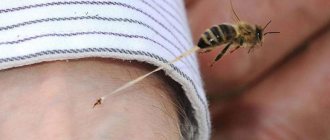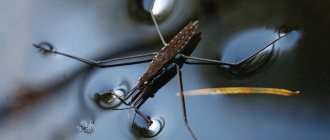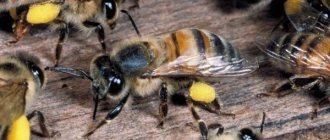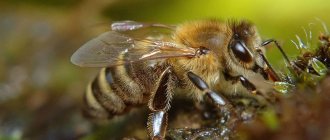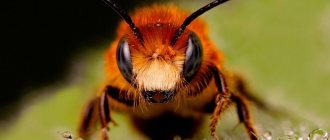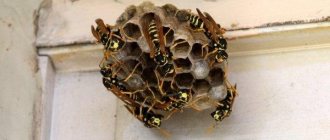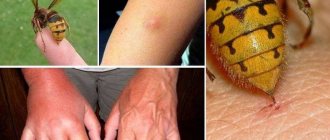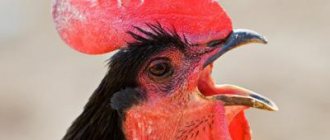| « | According to the laws, you know, modern aerodynamics mean that a bumblebee cannot fly. You shouldn't fly, you bastard! And he flies... an illiterate insect bitch. | » |
| — Weller, “Seryozha Dovlatov’s Knife” | ||
Bumblebee doesn’t care what they say about him.
A bumblebee shouldn't fly
- a well-known “scientific” paradox, in fact, has long ceased to be such, but is still often reproduced by various narrow-minded individuals. Sometimes a cockchafer is substituted for a bumblebee, but this does not change the essence.
This boyan goes like this in full: “According to the laws of physics, a bumblebee should not fly, but he doesn’t know about it and flies anyway.”
. Just such a formulation of the problem will cause not only a scientist, but also any sane person who understands that science is not intended to fence humanity off from the outside world, but to understand this world rationally. But first things first.
[edit] Background
The essence of the problem for the little ones: a fat guy with tiny wings.
The birth of the subject is covered in legends and dates back to the beginning of the twentieth century, when one great-wise scientist (different names are called, almost Ludwig Prandtl himself) decided to calculate the lifting force of the wings of a bumblebee. Why bumblebee? The bumblebee, an insect with the symbolic Latin name Bombus, has too small wings relative to the size and weight of its own body, but still manages to fly, and therefore is of particular interest for research.
Since this was only at the dawn of aerodynamics, the scientist applied formulas for calculating the lifting force of aircraft to the bumblebee, as a result of which he suffered a failure and concluded that the bumblebee should not fly and actually does so contrary to the laws of physics. Even if this is true, he did all this, most likely, exclusively for the lulz, because he could not help but understand that an airplane, unlike a bumblebee, does not flap its wings, its flight mechanics are completely different and by definition it belongs to bumblebees doesn't fit. The study of insect flight was thus waiting in the wings. However, the bumblebee, trampling the foundations of the universe, without waiting, became memetized and flew off to the people, where it gained wide popularity both as an argument in favor of the powerlessness of science, and as a suitable catalyst for the SRSG, and simply as a joke, which is not a sin to amuse friends with a glass. work colleagues.
How fast can a bumblebee fly?
The flight speeds of different insects vary greatly. The bumblebee is considered a relatively slow insect. Feeding on nectar, while flying from flower to flower, the earth bee is in no hurry. The flight speed of a bumblebee is about 1 meter per second. Usually the insect does not fly far from its favorite feeding or nectar collecting site. Returns to the flowers he likes. May check the same plant over and over again.
The maximum flight speed of a bumblebee is not precisely known. The recorded number is 5 meters per second. However, they also write about 15 m/s.
The world of insects never ceases to amaze nature lovers, professional biologists, and specialists in other sciences. The coloring of butterfly wings, the speed of mosquitoes, and the faceted vision of insects are being studied by scientists in order to bring new advanced devices to human life. The flight of the bumblebee has also been studied for about a century. Currently, interest has only increased. The aerodynamic characteristics of this insect surprise and delight physics experts. Nature created it so brilliantly.
[edit] In the world
A bumblebee shouldn't, but the bees don't know, oh.[1]
In those days, it was indeed hardly possible to adequately study the flight of insects simply because the level of photographic equipment for a long time did not allow recording the exact trajectory of their wings. With the achievement of this, as well as the development of this same aerodynamics with the discovery of new laws and principles, the subject gradually began to lose its aura of mystery and not so long ago lost it completely. Now the Internet is filled with jubilation that yet another British scientist has once again “refuted the common misconception that a bumblebee cannot fly.”
Nevertheless, the subject in its original form is still predictably popular on social networks[2], as is known, a little less than completely filled with lovers of “spectacular” quotes and demotivators of varying degrees of illiteracy, not accustomed to checking the bullshit they subscribe to. Also, this wise thought is slightly exaggerated in the cartoon “Bee Movie. Honey Plot,” but the bee shouldn’t be flying there anymore.
Giraffe
The existence of a giraffe is nonsense, since even their ten-kilogram heart is not able to raise a column of blood to a height of three meters to the head due to too high pressure, which at the same time should rupture the vessels of the neck. The giraffe cannot bend over: due to the rush of blood to the head, fainting is inevitable. The pressure in a giraffe's legs is about 400 mmHg. Art. For humans, much lower values are fatal, and in the vessels of our legs the pressure does not exceed 90 mm Hg. Art.
Although giraffes have a huge heart, relative to body size it turns out to be quite average. Only in 2016, scientists discovered that the force required to lift the blood is created due to the unusual structure of the ventricles and their reinforced wall. A little earlier it was shown that the vessels of the neck do not rupture due to their extreme elasticity, and the vessels in the legs, on the contrary, resemble a fortress - their walls are so thick. In addition, the vessels are able to compress very strongly to resist external pressure. And the blood does not rush to the head when the giraffe bends over, as it accumulates in the veins running along the neck.
[edit] Debriefing
Slo-mo
The mechanics of the flapping flight of insects is a really complex matter, and a person far from physics will hardly be able to fully understand it, much less explain it to another, simply by reading its description. As for the bumblebee specifically, the essence can be explained in a very simplified way: with fast, fast flapping of the wings, which have a certain flexibility and trajectory of movement, annular turbulences of air are formed at their edges, which are “dumped” at the end of the flapping and create the necessary lifting force for the insect and determine direction of movement.
It should, however, be noted that the bumblebee, despite the use of advanced achievements in biomechanics, is far from the most sophisticated flyer among its arthropod counterparts. Millions of flies fly in a similar way to a bumblebee, but at the same time, for a number of reasons, they are more adapted to that very aerobatics, which causes tons of hatred in the anonymous person and makes their subsequent extermination very difficult. But butterflies, who are more savvy in physics, are able to use various principles in the process of movement, not limited to the release of air flow. They, too, stubbornly did not fit into any theories until high-speed filming deflowered their secret. The cruising flight of butterflies is no less cunning than that of a bumblebee: butterflies “applaud” their wings, closing them first at the ends, and then over the entire area. The air from this tube, as it collapses, is pushed back, vigorously pushing the painted creature forward and upward. In addition, butterflies know how to glide, spreading their wings, where a bumblebee, having done the same, simply hits its butt on the ground.
- A fly riding a whirlwind.
- Vertical take-off butterfly.
In the end, all that remains is to once again kneel before Mother Nature, who created such complex and perfect flight mechanisms for her insect offspring, despite the fact that there is still no special profit from their research - there is an opinion that on a human scale, insect flight is not the same physics will not allow it to be reproduced, but that’s a completely different story.
Notes
- Sometimes a cockchafer is substituted for a bumblebee, but this does not change the essence.
- You just need to type “bumblebee fly” in the VKontakte news search
| [ + ] Bumblebee flying is not an official discipline of the Special Olympics. For more information, visit the Special Olympics portal. | |
| Politote | Armatosrach • Baltosrach • Bulbosrach • Great Patriotic War • St. George's Ribbon • Civil War in Russia • Gogisrach • Euromaidan • Are Russians Europeans? • The Iranian question • How can we develop Russia • Lend-Lease • Moskvosrach • National idea • Potsreots vs Liberasts • Pshekosrach • Russophobia • Sovkosrach • Khokhlosrach • Ympers vs Separatists • Political correctness • Mausoleumsrach • Tatar-Mongol yoke • Falsification of history |
| Other assholes | Abortion • Avtosrachi • Bogosrach (Atheism • æ Atheism • Orthodox atheism) • Is bodybuilding a sport? • Useless science • V/Na-srach • GMO • Friendship between a man and a woman • Zhanrosrach • Polivanov's system • Quantosrach • The book is better • Copysrach • Coffeesrach • Blood feud • Chicken or the egg? • Musical plagiarism • Violence in games • Legalize • Lunosrach • They sold out • Pyramidosrach • Platformosrach • Plutonosrach • Psinosrach • Psychoanalysis • Vaccinations • Rulesrach • Rusichesrach • The death penalty • Srach in demotivators • Typography • Phallometry • Ethological theory of Protopopov • Juvenile justice • Southern ocean • X is not dead |
| Other holivars | Windows vs. Linux • Mac vs. PC • TeX vs. WYSIWYG • Anime or not? • Vegans vs “meat eaters” • Will it take off or not? • Vinylophiles vs vinylphobes • Ovulians vs. Childfree • Pedivicia vs. Toradiciyo • Marioboy vs. Sonyboy vs. Billyboy • Men vs women • Science vs religion • True vs. Poser • Physicists vs lyricists • Shipping • A bumblebee should not fly |
| Local special competitions | Vandalism • War of edits • War of Friday the thirteenth • Dialogue with yourself • Breathing • Fuckery • Scratch in the notes |
| Laureates | AlexSword • Avanturist • Alksnis • Leonid Vasilevsky • Goblin • Zhenya Dukhovnikova • Katya Gordon • Zukagoy • Mitsgol • Svistunov • Okhrimka • Peysatel • Plyukha • Guinness World Record Holders • Stillavin • Churlyaev • Yarovrat • Ruslan Karmanov • Petya the Superman • Shmukler |
| Team race winners | Grammar nazi • Shitheads • Culinary snobs • Oppositionists • Socionics |
| Indications for participation | Butthurt • • Active civic position • Boklanopoctitis • Inadequate degree • Women's logic • Moralfatism • Over-brain • Watchman's syndrome • Mourner's syndrome • Duckling's syndrome • Subculture • ChSV • FGM • Youthful maximalism • |
| Stadiums | Check you • Fandom • Questions and answers (Google • mail.ru • Yandex) • Hansa • Loveheit • • // |
| [ + ] The bumblebee shouldn't fly Matan | |
| Achievements | TeX • Atomic bomb • Bioreactor • Large Hadron Collider • GMO • Two hundred and twenty • Uprooter • Rubik's Cube • Nanotechnology • Chamber of Weights and Measures • Robots • Nuclear fusion • Chernobyl • Exoskeleton • Fukushima |
| Theory and discoveries | Star polygon • Quantum mechanics • Cognitive psychology • Malthus's population theory • Radiation • Dark energy • The Big Bang Theory (TV series) • Theory of relativity • Broken windows theory • String theory • The fourth dimension • Black hole • Evolution • Elementary particles |
| Memes | 265 • xkcd • Occam's razor • Division by zero (Yatsenyuk) • Dihydrogen monoxide • Leo Tolstoy's problem • Einstein's problem • Murphy's law • Pareto's law • Square-nested way of thinking • Quadrature of the circle • Photon box • Schrödinger's cat • Matan captcha • Popper's criterion • Scientific poke method • Peak oil • Catch a lion in the desert • Recursion • Spherical horse in a vacuum • Fermat’s theorem • Graham’s number • Erdős number |
| People and organizations | Organizations (ITMO • MIPT • NMU) • Byron • Belonenko • Berezovsky • Wasserman • Verbitsky • da Vinci • Descartes • Dawkins • Engineer • Carroll • Laboratory • Lobachevsky • Lugovsky ( |
Hummingbird
If a car drove at the speed of a hummingbird (relative to its size), it would reach a crazy 2090 km/h - 1.7 times the speed of sound! In a second, a hummingbird moves a distance 380 times the length of its body. In the same time, a fighter plane covers a distance 38 times its own length. To accelerate like this, the birds have to make up to 80 strokes per second. In this case, the “flight efficiency” of the wing muscles does not exceed 20%, and the rest of the energy is dissipated in the form of heat. Considering that hummingbirds live in hot climates, and their feathers prevent heat from escaping into the environment, birds must heat up to temperatures incompatible with life.
Hummingbird heat dissipation has long remained a mystery. But in 2016, researchers using highly sensitive infrared video cameras were able to record exactly how birds cool themselves in flight. It turned out that heat is removed through several special zones: around the eyes, on the legs, under the wings and on the stomach. The temperature of these areas is on average 8 °C higher than the ambient air temperature, and depending on the flight speed, the hummingbird’s body “chooses” through which zones and with what intensity to get rid of the extra degrees. That is, the secret of the hummingbird is in the exquisite distribution of heat removal zones and their finest regulation.
Photo: NATUREPL (X4), SPL /
LEGION-MEDIA
Reproduction
Bumblebee reproduction has four stages:
- Egg.
- Larva.
- Doll.
- Imago (aka adult).
With the beginning of spring, the queen, which has overwintered and is fertilized in the fall, flies out of her shelter and within several weeks is actively preparing for nesting. Having found a suitable place for the nest, the queen begins construction. In a newly built nest, the queen lays 8-16 eggs, which have an elongated shape.
After 3-6 days, bumblebee larvae appear, they grow quickly, feeding on food brought by the female.
After 10-19 days, bumblebee larvae begin to weave a cocoon and pupate. After another 10-18 days, young bumblebees begin to emerge from the cocoons, gnawing at them. By the way, later empty cocoons can be used to store honey or pollen. After the appearance of the first offspring, 20-30 days after the eggs were laid, the queen almost never leaves the nest. The responsibilities for obtaining food are taken over by its first children - working individuals who also perform all other important functions.
As for born males, 3-5 days after formation into an adult, they leave their parental nests in search of other nests and other queens, with whom they will mate in the fall, during the mating season of bumblebees.
Archaea / Thermococcus gammatolerans
These bacteria-like creatures tolerate a radiation dose of 30,000 grays. A person dies after receiving only 5 grays: radiation of such intensity tears DNA to shreds. In addition, T. gammatolerans
They thrive in boiling water: in hydrothermal vents, where they were discovered in 2003, temperatures reach 100 °C.
How T. gammatolerans
can withstand deadly radiation is not entirely clear.
Microorganisms repair DNA thanks to very active nucleic acid repair systems. But they are not enough to withstand a dose of 30,000 gray, so researchers are actively studying T. gammatolerans
: perhaps their defense methods can be used to “repair” DNA damage in humans.
Nest
Bumblebee nests can be underground, on the ground, or above the ground; let’s look at them in more detail.
Nests underground
Many species of bumblebees build their nests underground, sometimes even nesting in the burrows of various rodents. Interestingly, the smell of mice attracts female bumblebees. Also in the mouse hole there is a lot of useful material for insulating a bumblebee nest: wool, dry grass, etc.
Nests on the ground
Some types of bumblebees, for example, Schrenk's bumblebee, forest and field bumblebees, build their nests on the ground: in the grass, under plants, even in abandoned bird nests.
Nests above ground
Some types of bumblebees prefer to make their nests above the ground: in tree hollows and birdhouses.
The shape of underground and above-ground nests can be different and depends on the cavity used by bumblebees. The nests are insulated with dry grass, moss, and reinforced with wax secreted by bumblebees using special abdominal glands. From this wax, bumblebees build a wax dome that prevents the penetration of moisture; it also masks the entrance to the nest to protect against the invasion of uninvited guests.
Tardigrades / Tardigrada
Having been outside the ISS, in the deep vacuum and cold of space, the tardigrades survived and then gave birth to fertile offspring. These creatures can withstand a wide range of radiation, doses of which are a thousand times higher than lethal levels for humans, heating up to 150 ° C and pressure of 6000 atmospheres (normal pressure at the surface is 1 atmosphere).
Finding themselves in extreme conditions, tardigrades fall into suspended animation: their metabolism slows down to 0.01% of normal, and the water content in tissues drops to 1% of normal. Tardigrade cells survive dehydration thanks to special sugars and proteins that absorb adverse effects. The DNA of tiny animals is protected from radiation by unique proteins of the dsup
, which “envelop” nucleic acids, preventing radiation from reaching genes. These same proteins save the DNA of tardigrades from damage by strong oxidizing agents such as hydrogen peroxide.
Kangaroo
In one jump, kangaroos cover up to nine meters, and they can jump for hours. Calculations show that such jumping ability requires at least 10 times more energy than animals receive from food.
Elastic tendons in the hind limbs store up to 70% of the energy for jumping. In addition, the task of pushing the body off the ground is greatly facilitated by compensatory movements of various parts of the kangaroo's body, primarily the tail and head. Simple calculations, which assume that a kangaroo is something like a sack of potatoes that needs to be lifted and lowered to the ground, do not take into account all these factors.
False hypothesis
Mathematical formulas and laws of aerodynamics explained the flights of many insects:
Any flying living creature was subjected to aeroanalysis and after some calculations it became clear how it flies. When it came to the bumblebee, which is the bee's closest relative, scientists came to a dead end. They tried to apply formulas that calculate the lift force acting on an airplane.
It is not surprising that these formulas were in no way suitable for insect flight. The surface area of its wings was too small to generate enough force to lift its bulky body. There was no talk of planning in the air flow here. The conclusion was clear and curious: a bumblebee cannot fly.
